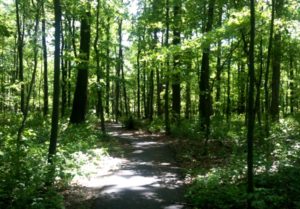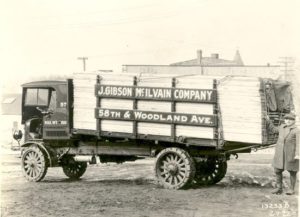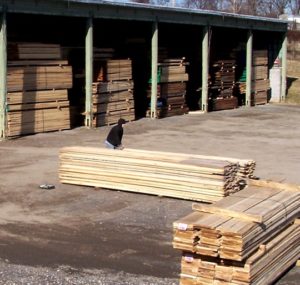 Whenever someone learns that I work for a lumber company I am often greeted with questions about where our lumber comes from or how we are coping with waning supply. The general perception is that loggers clear cut every tree in the last 200 years and there are so few trees left that how could an industry such as ours continue to operate. Whether this is because of an exhausted supply or in good conscience with our resources so depleted. I want to take a moment and dispel some of these perceptions. I will focus primarily on North American domestic species as I have spent a lot of time on this topic for exotics in a previous post on lumber importing.
Whenever someone learns that I work for a lumber company I am often greeted with questions about where our lumber comes from or how we are coping with waning supply. The general perception is that loggers clear cut every tree in the last 200 years and there are so few trees left that how could an industry such as ours continue to operate. Whether this is because of an exhausted supply or in good conscience with our resources so depleted. I want to take a moment and dispel some of these perceptions. I will focus primarily on North American domestic species as I have spent a lot of time on this topic for exotics in a previous post on lumber importing.
Let’s be honest, forestry practices in the US during the late 1800s and early 1900s were far from sustainable. Clear cutting was common and more importantly the damage caused to surrounding land just to get to the clear cut was severe. We abused our natural forest resource with no though for the future. Awareness began to creep in after World War I that this supposedly inexhaustible resource was in fact shrinking at an alarming rate. This was the beginning of forestry management plans and active replanting schemes to try and undo some of the damage cause by clear cutting. In the decades since many generations of trees have grown up in designated forestry zones to keep the supply alive as building has increased with our every growing population. Unfortunately old growth trees that flourished for centuries cannot be replaced in 50-60 years and this is a loss we must deal with from our previous lack of stewardship.

Today, forestry science has come a long way and much research has gone into determining how to regrow our old growth forests while maintaining a strong supply to meet modern construction demands. Keeping a certain number of old growth trees per area is key to maintaining a healthy forest and clear cutting is banned in many areas to keep these forests healthy. Yes our lumber today does not often come in very wide and very long sizes like it did in the early 20th century but it is rare that our projects demand such dimensions. At the same time, we are seeding our future success and there will come a time when old growth lumber will be available again without harming our forests. In fact selective cutting of mature trees is eventually a necessity to provide proper sunlight to younger trees.
In Canada the exploitation and clear cutting was not as extensive due to such a large land area and low population so many old growth forests still remain. The current mandates for replanting and harvesting are some of the most aggressive in the world creating a very healthy population of newer trees. Back this up with a sizable old growth population and Canadian forests are some of the best managed on the planet.
So as a builder, furniture maker, boat builder, or weekend woodworker a respect for wood is necessary, but fear of buying hardwoods and softwoods because of waning supply should not be a factor. The minute that we stop buying these woods, our forests managed specifically to be harvested quickly lose their value. The idealist may think that a forest left along has great value and that is hard to dispute. The reality is that wood is still the primary building material and forestry companies have invested a lot of funds and time managing these lands. If their investment begins to plummet in value then they will quickly find a way to sell it anyway they can. If a market for quality hardwoods and softwoods isn’t available then a buyer can always be found for products like paper, plywood, particle board, and MDF where wood grain and consistency isn’t important. Additional industries will seek the land for other reasons not related to trees and then clear cutting resumes. Maybe I’m being a bit extreme but with our population continuing to grow, space and building material is necessary. Suddenly, your local home center is selling Cherry, Ash, and Oak 2x4s at the same price they once sold Hem/Fir. The quality is low and the moisture content is high and essentially that quality wood is wasted. The reason that woods like Cherry and Walnut are held in higher esteem (and higher price point) is that there is a market for them in the first place. If you have ever see Walnut used for beams in an old barn you will understand that without a demand these show piece quality woods get used for “common” projects.

In conclusion, we MUST buy quality woods in order to protect our forests. Stewardship and sustainability isn’t about banning logging, but proper regulation and management. No company no matter how noble and environmentally conscious is going to spend centuries managing a forest if the value of the lumber depreciates every day. The user of fine hardwoods and softwoods has a respect for the material already created through hours of crafting it. We get it and we must be the ones who protect our forests by continuing to use them.









These are wonderful articles and are very intriguing. I would love the ability to easily share articles like this on social networking sites such as facebook and twitter. You should consider adding social networking widgets that would allow me to spread this type of content to a wider audience easily.
Thanks Jordan, feel free to share using the social share buttons both at the start and end of these articles.